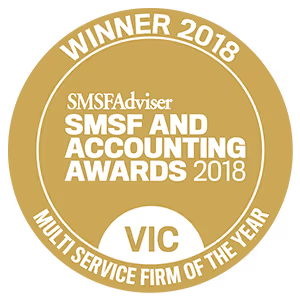Retirement is the capstone of a busy life. You’ve worked hard, saved diligently, and now it’s time to enjoy the rewards. The Age Pension may not be enough on its own, and making sure your retirement savings are strong enough to meet your goals takes careful planning and smart investment decisions.
Investing for retirement isn’t just about chasing returns — it’s about building the wealth that supports your ideal retirement lifestyle, while taking the least amount of risk necessary to achieve it. Unfortunately, many people make the mistake of comparing their investment strategies to others. But everyone’s goals, financial circumstances, and risk tolerance are different. What works for someone else may not work for you.
As seasoned advisors, we understand that retirement planning is a personal journey. That’s why we’re here to guide you through your retirement investment options, ensuring your strategy is tailored to your specific needs and objectives.
Here’s our general guide to investing for retirement in Australia, and how to do it safely.
Determine how much you need to live your retirement goals
Before you can effectively invest for retirement, you need to have a clear vision of what you want your retirement to look like. You'll need to assess your desired lifestyle, estimate your expenses, and set realistic financial targets. Plus, Australians are living longer according to the Australian Institute of Health and Welfare, so there’s that to factor in, too.
Here’s how to get started:
First, consider when you plan to retire.
The age at which you retire plays a huge role in determining how much money you’ll need. If you’re planning to retire early, you’ll need more funds to last throughout a longer retirement. If you intend to keep working later in life, you may not need as much saved up as others, but you should also consider that your health and lifestyle needs may change over time.
Next, think about what kind of life you want to lead.
Your lifestyle goals will largely determine your financial targets. Are you dreaming of a quiet, modest retirement, or one filled with travel, leisure activities, and new experiences? The more ambitious your lifestyle plans, the more you’ll need to save and invest to support them.
Finally, estimate your retirement expenses.
A practical way to do this is to base your calculations on a percentage of your current income. Many experts recommend planning to spend around 70–80% of what you do now. This estimation helps you get a realistic idea of how much you need to save to cover daily expenses, healthcare, hobbies, travel, and other costs.
We can help you break down these details and build a clear financial roadmap. Having a solid understanding of your retirement goals is the first step towards investing wisely to achieve them.

Determine the structure of your retirement investments
When it comes to the structure of your retirement investments, you might be wondering where the safest place to invest your retirement savings is. While we can't answer this definitively, we can give you a guiding hand.
Super is the most tax-effective place to hold your investments when you're retired. Once you're over 60 and retired, your super fund enables you to receive both your income and any capital gains tax-free.
But where and how you hold your assets in your super account will significantly impact the retirement income you can access. With the right planning, you could eliminate tax on your income entirely — including Capital Gains Tax. You may also have investments in your own name, a family trust, or an investment company. All these options can also be a tax-effective option if planned the right way.
So be sure to speak with one of our tax advisors to determine the most tax-effective way to structure your assets. We can ensure you optimise your holdings, so you can minimise the amount of tax you pay on your retirement income.
Where is the safest place to invest retirement money?
The safest place to invest retirement money is in defensive assets like government bonds, term deposits, and high-interest savings accounts. These options aim to protect your capital from market volatility while providing steady, low-risk returns.
However, the safest investment may not be enough to cover your retirement needs over time. Low-risk investments often provide lower returns, which can be problematic when you factor in the impact of inflation and rising costs of living. If you want your money to last, consider balancing these safe investments with growth assets in a conservative balanced portfolio. This approach could mean keeping your super savings growing while maintaining a reliable income stream.

Determine your investment options
You've determined your retirement goals, how much you want to spend each year, and the most tax-effective structure in which to hold your investments. This means you're ready to start selecting the right investments and building your asset allocation.
The key to investing in a way that delivers robust income in retirement is to use financial modelling. This helps you to identify which investments are most suitable for your retirement goals and enables you to decide on the appropriate asset allocation that delivers the retirement you want.
Financial modelling can help you predict what sort of returns your investments are likely to get each year (based on historical averages). You can then overlay that with how much you're spending each year, to determine how long your money will last — and ensure you don't run out.
[tip_box]
Download our guide to a financially successful retirement
This guide can help you make confident financial decisions as you plan for retirement
Inside you’ll find key insights and practical advice to help you retire on your terms—with enough savings to support the lifestyle you want.
- How much superannuation is enough to retire comfortably
- Tax-effective strategies to boost your retirement savings
- Transition-to-retirement strategies explained
- When and how to access your super
- Investment tips for income and stability in retirement
[/tip_box]
What is the best asset allocation for retirement planning?
The best asset allocation for retirement planning balances growth and security, aiming to generate reliable income while preserving capital. For most retirees, a conservative balanced portfolio works best. This often includes a mix of growth assets like Australian and international shares, defensive assets like bonds, and cash for stability.
It’s important to consider your personal objectives, super balance, life expectancy, and risk tolerance when choosing your investment mix. It’s all a matter of risk and return: diversifying your retirement portfolio helps reduce financial risks and smooth out investment returns over time. Regularly reviewing your asset allocation and adjusting based on changing needs or market volatility is essential. Financial modelling can also help you ensure your money lasts as long as possible.
Retirement planning example: let's put all of that into practice
Let's say you have $1.2 million to invest. Your goal is to spend $70,000 in retirement each year.
You plan to retire at 65, and you want your investments to last for 35 years until you're 100 years old.
Financial modelling can predict what may occur in the future and what your asset allocation may look like. For example, your asset allocation may be:
- 40% in Australian shares
- 20% in international shares
- 20% in fixed interest
- 10% property
- 10% cash
Looking at historical data, you're expecting:
- Australian shares to return 4.5% per year in income, and 5% per year in capital growth (the share price increase)
- International shares may be likely to return 6% capital growth and 2.5% income
- Fixed interest could return 3% income, but no growth
- Property could return 4% growth and 4% income
- Cash returns nothing but keeps your money in a safer investment environment.
[table]
[thead]
[tr][th]Investment type[/th][th]Allocation[/th][th]Amount[/th][th]Income[/th][th]Growth[/th][/tr]
[/thead]
[tbody]
[tr][td]Australian shares[/td][td]40%[/td][td]$480,000[/td][td]$21,600[/td][td]$24,000[/td][/tr]
[tr][td]International shares[/td][td]20%[/td][td]$240,000[/td][td]$6,000[/td][td]$14,400[/td][/tr]
[tr][td]Fixed interest[/td][td]20%[/td][td]$240,000[/td][td]$7,200[/td][td]-[/td][/tr]
[tr][td]Property[/td][td]10%[/td][td]$120,000[/td][td]$4,800[/td][td]$4,800[/td][/tr]
[tr][td]Cash[/td][td]10%[/td][td]$120,000[/td][td]-[/td][td]-[/td][/tr]
[tr][td]Total[/td][td]-[/td][td]-[/td][td]$39,600[/td][td]$43,200[/td][/tr]
[/tbody]
[/table]
So in the first year of this hypothetical example, your portfolio generates $39,600 in income and $42,200 in capital growth. This delivers a total return of $82,800 per year.
If you draw down $70,000 to fund your retirement, you'd be taking $39,600 of the income generated, but also a portion of the available cash.
In this way, you'd eventually need to start selling some of your assets each year, to ensure you had enough cash to withdraw. However, the capital growth in this portfolio would keep it strong, and the financial modelling shows you wouldn't run out of money for another 45 years.
[general_awards][/general_awards]
What is the safest retirement plan?
The safest retirement plan is one that combines diversification, conservative investment choices, and regular reviews to ensure your retirement savings are protected. For most retirees, an account-based pension provides a flexible and tax-effective way to draw income from your super savings. It allows you to choose how often payments are made and adjust them as needed, making it a practical way to manage income stream and investment returns.
While a conservative investment strategy reduces exposure to risk, it’s also essential to consider how long your money will last. This requires financial modelling to project your future income needs and match your investments accordingly. Adding some growth assets to your retirement portfolio can help you keep pace with inflation and rising costs. Regularly reviewing your plan with a financial adviser ensures you stay on track and make adjustments as your situation changes.
Stay on top of your investments
Knowing how your investments are tracking is crucial to ensuring you have enough money to fund your retirement. So you need to review your portfolio every year.
After all, things can change quickly. The market may face a downturn, your spending habits can change, or you may withdraw a large amount to buy a new car or take a holiday. Or it may happen that you need extra care in your later years.
So planning your retirement investments isn't a set-and-forget affair. You should review your portfolio every year, to ensure it still meets your goals. A qualified financial adviser will help you with this.
[free_strategy_session]
Free retirement planning strategy session*
Book a 90-minute strategy session and gain clarity about your retirement future.
- Get a clear understanding of your retirement goals
- Receive a detailed, personalised report from your strategy session
- Understand your best investment options and next steps
Book your free retirement planning strategy session.
[/free_strategy_session]
The final word
The key thing in planning how to invest for your retirement is getting the right financial advice. Find an experienced financial adviser who'll work with you for the long term to help you enjoy the next stage of your life.
Liston Newton Advisory has over 40 years of experience helping our clients plan their retirement. So you can trust us to help you with yours.






